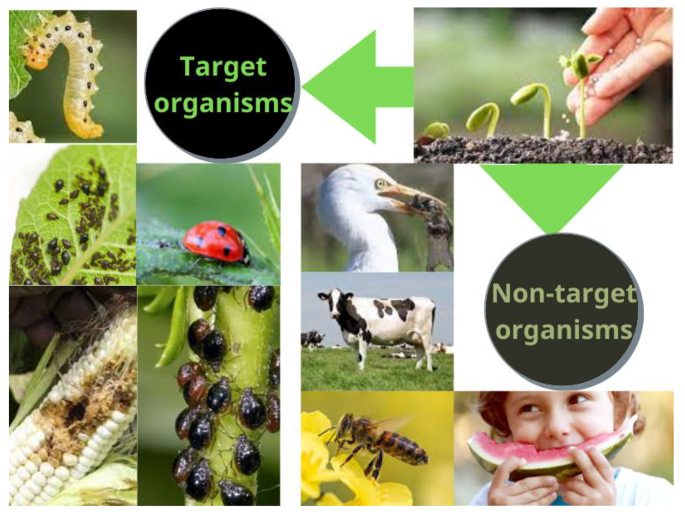Unknown Facts About Eco Bed Bug Exterminators Dc
Table of ContentsThe Of Eco Bed Bug Exterminators DcThe Facts About Eco Bed Bug Exterminators Dc RevealedHow Eco Bed Bug Exterminators Dc can Save You Time, Stress, and Money.Some Known Factual Statements About Eco Bed Bug Exterminators Dc Facts About Eco Bed Bug Exterminators Dc Uncovered
Due to the fact that chemicals are hazardous, they are likewise potentially unsafe to human beings, pets, other organisms, and the environment. People that use chemicals or regularly come in call with them should understand the relative poisoning, prospective health and wellness impacts, and preventative steps to reduce exposure to the products they utilize. Hazard, or threat, of utilizing chemicals is the capacity for injury, or the level of threat entailed in making use of a chemical under a given collection of conditions.
Nevertheless, applicators can lessen or virtually get rid of direct exposure-- and hence minimize hazard-- by following the label instructions, using personal safety clothing and equipment (PPE), and taking care of the pesticide correctly. As an example, greater than 95 percent of all pesticide exposures come from facial exposure, mainly to the hands and lower arms. By putting on a set of unlined, chemical-resistant gloves, this kind of exposure can be virtually gotten rid of.
The hazardous impacts that take place from a single direct exposure by any kind of path of entry are labelled "acute results." The four routes of direct exposure are facial (skin), inhalation (lungs), dental (mouth), and the eyes. Acute toxicity is determined by examining the facial toxicity, inhalation poisoning, and oral poisoning of guinea pig.
Eco Bed Bug Exterminators Dc Things To Know Before You Get This
Acute poisoning is determined as the amount or focus of a toxicant-- the a.i.-- required to eliminate 50 percent of the animals in an examination populace. This procedure is typically revealed as the LD50 (lethal dosage 50) or the LC50 (lethal concentration 50). In addition, the LD50 and LC50 worths are based upon a solitary dose and are taped in milligrams of pesticide per kg of body weight (mg/kg) of the guinea pig or partially per million (ppm).
The reduced the LD50 or LC50 worth of a chemical product, the higher its poisoning to humans and pets. Chemicals with a high LD50 are the least poisonous to human beings if used according to the instructions on the item tag. The chronic poisoning of a chemical is established by subjecting test animals to lasting exposure to the energetic ingredient.
The persistent toxicity of a chemical is a lot more tough than intense poisoning to determine with lab analysis. Products are classified on the basis of their relative intense toxicity (their LD50 or LC50 values). Chemicals that are categorized as extremely toxic (Toxicity Group I) on the basis of either dental, dermal, or breathing toxicity need to have the signal words DANGER and toxin printed in red with a skull and crossbones symbol plainly showed on the front panel of the plan label.
The intense (solitary dosage) dental LD50 for pesticide items in this group varies from a trace total up to 50 mg/kg. Exposure of a few declines of a material taken orally can be fatal to a 150-pound person. https://on.soundcloud.com/N4Bqmd4SgXTkLGzDA. Some chemical items have simply the signal word risk, which tells you nothing regarding the intense poisoning, just that the product can create serious eye damage or extreme skin irritability
6 Simple Techniques For Eco Bed Bug Exterminators Dc
In this category, the intense oral LD50 arrays from 50 to 500 mg/kg. A teaspoon to an ounce of this product can be deadly to a 150-pound individual (exterminator near me). Chemical items classified as either a little harmful or reasonably nontoxic (Toxicity Groups III and IV) are required to have the signal word CAUTION on the chemical tag

Examine This Report on Eco Bed Bug Exterminators Dc
All pesticide toxicity chemicalPoisoning including the Consisting of, can be found on discovered product's Material Safety Data Security (MSDS). Chemical labels and MSDS can be obtained from stores or makes. On top of that, a lot of products likewise have information that can be located on the net. The signs of pesticide poisoning can vary from a light skin irritability to coma or also fatality.
People likewise vary in their level of sensitivity to various degrees of these chemicals. Some individuals might show no response to a direct exposure that may trigger extreme ailment weblink in others (exterminator). As a result of potential health and wellness issues, chemical customers and trainers should recognize the typical indications and symptoms of pesticide poisoning. The impacts, or symptoms, of chemical poisoning can be broadly defined as either topical or systemic.
What Does Eco Bed Bug Exterminators Dc Mean?
Dermatitis, or inflammation of the skin, is accepted as the most generally reported topical result linked with chemical exposure. Some individuals often tend to cough, hiss, or sneeze when subjected to chemical sprays.
This symptom normally subsides within a few mins after a person is eliminated from the direct exposure to the irritant. A reaction to a pesticide product that creates a person not just to sneeze and cough however additionally to create serious intense breathing signs and symptoms is more most likely to be a real hypersensitivity or sensitive reaction.
Systemic results are rather various from topical results. They frequently take place away from the initial point of call as an outcome of the chemical being taken in right into and dispersed throughout the body. Systemic impacts commonly include queasiness, throwing up, fatigue, frustration, and digestive tract problems. In advanced poisoning cases, the individual may experience adjustments in heart rate, trouble breathing, convulsions, and coma, which could bring about death.